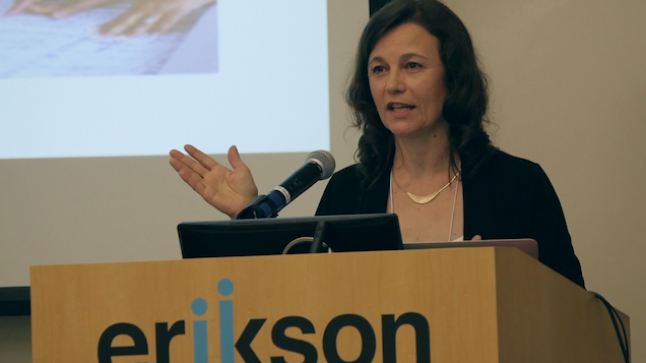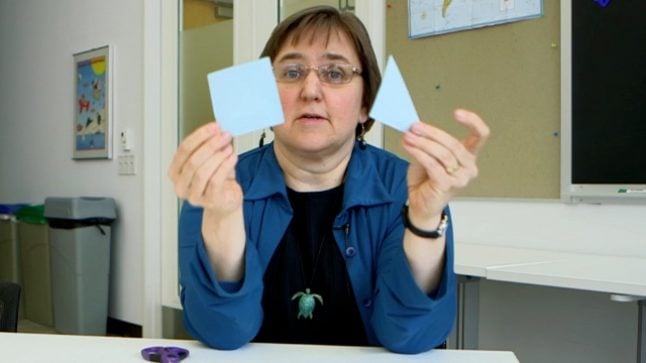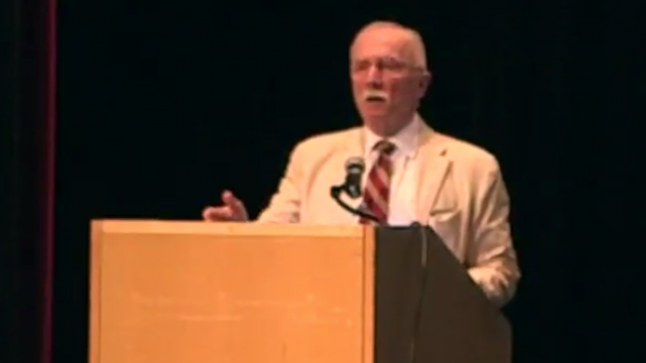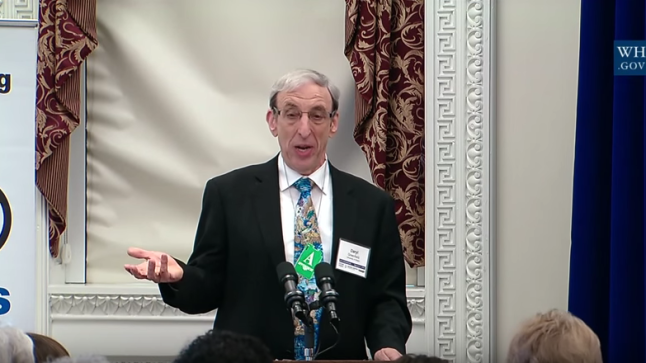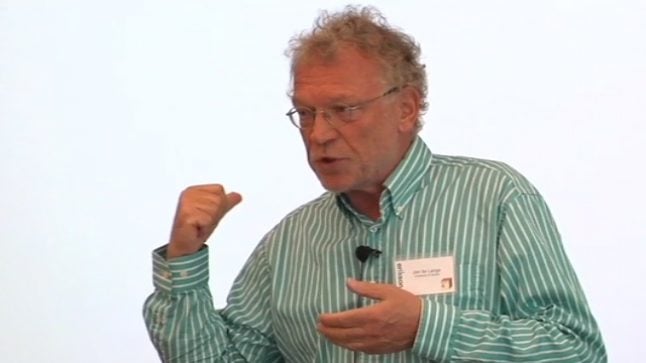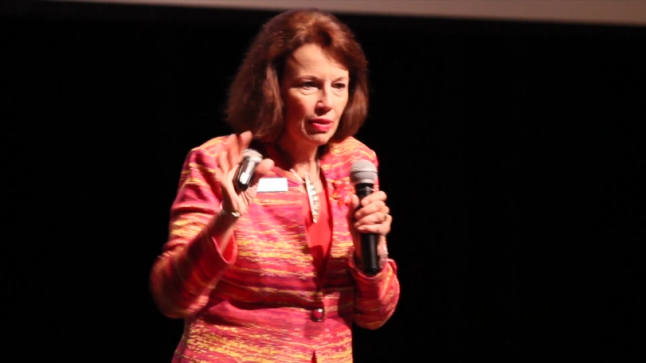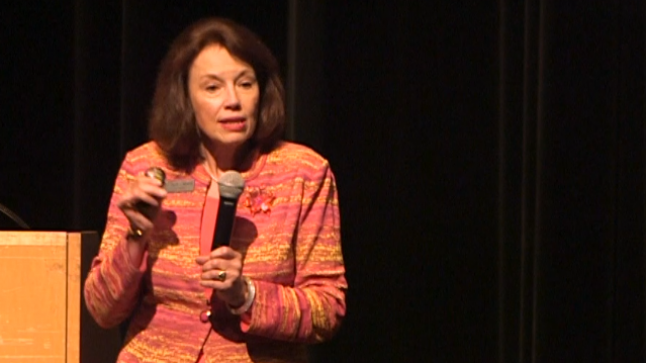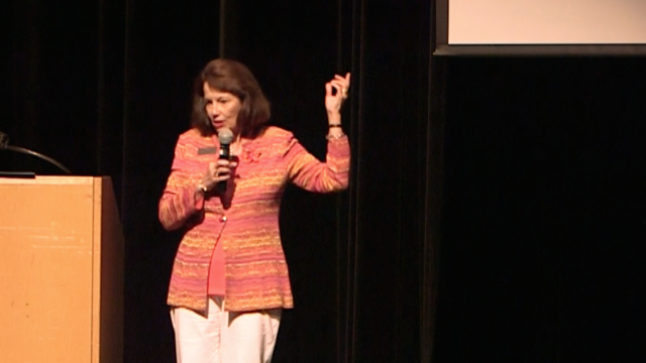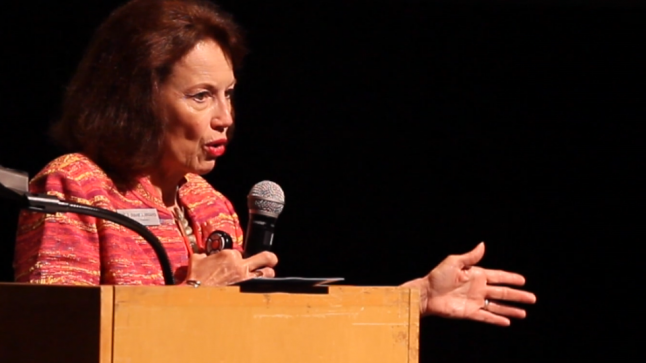Adult Learners
Series: Hear from the Experts
Instructional Tools to Integrate Language and Math Concepts with Halla Jmourko
June 22, 2018
Halla Jmourko discusses two innovative instructional tools for integrating language and math concepts in the classroom, The Cubing Game and Three Way Tie.
- Age/Grade Level: Adult Learners, Kindergarten, 1st Grade, 2nd Grade, 3rd Grade
- Tags Games, Promising Math
Series: Hear from the Experts March 26, 2017
Tangram Puzzles: Make One For Your Kids
Instructor Lisa Ginet explains how to make tangram puzzles, an ancient Chinese game made from seven shapes cut from a square. Over 6500 different arrangements can be made from these seven simple shapes!
- Topic: Spatial Relationships, Shape
- Age/Grade Level: Adult Learners, Pre-K, Kindergarten, 1st Grade, 2nd Grade, 3rd Grade
- Tags Games
Series: Hear from the Experts October 25, 2016
Language, Culture, and Math Through Storytelling with Sylvia Celedón-Pattichis
Sylvia Celadón-Pattichis advocates storytelling as a means to vary the context of word problems to make them more relevant and accessible to young, dual-language learners.
- Age/Grade Level: Adult Learners, Pre-K, Kindergarten, 1st Grade, 2nd Grade, 3rd Grade
- Tags Culture, Promising Math
Series: Hear from the Experts May 7, 2016
“Ooh-Ooh Culture”: Answer-Getting Versus Collaborative Learning
Phil Daro compares and contrasts the answer-getting learning style of the United States with the collaborative learning style of Japan.
Series: Hear from the Experts April 22, 2016
Erikson Visits the White House for Symposium on Early Learning STEM
On April 21, 2016, the Early Math Collaborative was invited to the White House to attend its Symposium on Early STEM.
- Age/Grade Level: Adult Learners
- Tags Doug Clements
Series: Hear from the Experts March 18, 2016
Spatial Reasoning with Jan de Lange
Children, even at a very young age, have an incredible understanding of spatial relationships. Jan de Lange brings up the idea that elementary school classrooms might consider starting their math curriculum with spatial reasoning. Ideas…
- Topic: Spatial Relationships
- Age/Grade Level: Adult Learners, Pre-K, Kindergarten, 1st Grade, 2nd Grade, 3rd Grade
- Tags Jan de Lange
Series: Hear from the Experts March 13, 2016
Discussions that Advance Mathematical Learning with Diane Briars
Summing up the point of the day's lesson with the whole class is an extremely important, yet often neglected part of any math lesson.
- Age/Grade Level: Adult Learners, Pre-K, Kindergarten, 1st Grade, 2nd Grade, 3rd Grade
- Tags Diane Briars, Planning
Series: Hear from the Experts November 19, 2015
Rich Math Tasks with Diane Briars
Diane Briars describes math tasks as "the vehicles for mathematical learning." It is important that tasks require reasoning and problem solving strategies.
- Age/Grade Level: Adult Learners, Pre-K, Kindergarten, 1st Grade, 2nd Grade, 3rd Grade
- Tags Problem Solving, Diane Briars
Series: Hear from the Experts November 18, 2015
Selecting Common Core Instructional Materials with Diane Briars
What is the quality of the instructional activities that students will be engaged with everyday? Diane Briars explores this question.
- Age/Grade Level: Adult Learners, Pre-K, Kindergarten, 1st Grade, 2nd Grade, 3rd Grade
- Tags Common Core, CCSS, Diane Briars
Series: Hear from the Experts November 16, 2015
Learning Goals in the Common Core with Diane Briars
Diane Briars differentiates between the learning goals of a particular lesson and the Common Core State Standards associated with it.
- Age/Grade Level: Adult Learners, Pre-K, Kindergarten, 1st Grade, 2nd Grade, 3rd Grade
- Tags Common Core, CCSS, Diane Briars, Planning
Do the math.
Free videos.
Free newsletter packed with ideas.
Free professional learning modules.
